Dreams and Death in Tibetan Culture
The practice of dream yoga and analysis has been used in Tibet since ancient time and is considered as an important part of the medical analysis and mind training. Tibetan Bon faith healers (Ancient shamans) used dreams to read the relationship between the spirits and humans, and diagnose diseases. There were also independent female “Dream tellers“ who served as court psychics. After Buddhism came to Tibet in the 7th century, dream analysis became an aspect of medical knowledge and spiritual practice and became a more important subject of both fields in accordance with the four medical tantras, the Gyud-shi.
In sutra, dreams are seen as an important example of illusion and are used as an analogy of impermanence. In tantra, dream is also regarded as illusory however understanding how dreams function relative to consciousness is considered to be like a road-map through the experience of death. According to Tibetan Buddhist teachings on the process of the consciousness transmigrating one life to the next through the Bardo, a practitioner can use working with dream states to gain a better understanding of their travels into the next life. The intermediate state lasts from a few minutes or few days to a maximum of 49 days. During the death process the dream-like mental body sees many aspects of its new world with uncertainty and fear. It is a world of lights, colors and sounds, and the mind experiences it like going through nightmares or adventures in the dream. The mind also sees his previous house, family and work, etc and tries to continue to engage in daily life but without being able to interact with others. Such experiences occur and it is very difficult for the consciousness to recognize that death had happened.
The death process is said to be very similar to the dream state, where we feel ‘normal‘, with a body and life that looks real. Friends come to meet us, events happen and all these aspects are perceived as external factors rather than as our own mind’s creation. Normally, we experience dreams in which we are not capable of fully participating.
Because of the similarity between the Bardo and dream processes, the tantric Buddhist spiritual practice uses dream as a way of of preparing the consciousness to recognize these illusory states for what they are, and so to develop useful capacities for the moment of death.
His Holiness the Dalai Lama:
“In order to train in the path that would allow us to transform death, the intermediate state, and rebirth, we have to practice on three occasions: during the waking state, during the sleeping state, and during the death process. This entails integrating the self with spiritual training. Now we have three sets of three:
Death, intermediate state, and rebirth
Dharmakaya, Sambhogakaya, and Nirmanakaya
Sleeping, dreaming, and waking
In order to achieve the ultimate states of Dharmakaya, Sambhogakaya, and Nirmanakaya, one must become acquainted with the three stages of death, intermediate state, and rebirth. In order to become acquainted with these three, one must gain acquaintance with the states of dreamless sleep, dreaming, and waking.
“To gain the proper experience during sleep and the waking state, I think it is crucial to become familiar, by means of imagination, with the eightfold process of dying, beginning with the waking conscious state and culminating in the clear light of death. This entails a dissolution process, a withdrawal. At each stage of the actual dying process there are internal signs, and to familiarize yourself with these, you imagine them during meditation in your daytime practice. Then in your imagination, abiding at the clear light level of consciousness, you visualize your subtle body departing from your gross body, and you imagine going to different places; then finally you return and the subtle body becomes reabsorbed in your normal form. Once you are experienced at visualizing this during daytime practice, then when you fall asleep an analogous eightfold process occurs naturally and quickly. That’s the best method for enabling you to recognize the dreamless sleep state as the dreamless sleep state. But without deeper meditative experience of this in the daytime, it’s very difficult to realize this dissolution as you fall asleep.
“In the Highest Yoga Tantra practice there are two stages for any sadhana or visualization practice: the stage of generation and the stage of completion. In the stage of generation, the more basic of these two, this whole eightfold process of dissolution is experienced only by the power of imagination; you just visualize it. But in the second stage of practice, the stage of completion, by means of prana yoga, including the vase meditation, you bring the vital energies into the central channel, and you actually bring about such a dissolution, not just with imagination, but in terms of reality. You bring about such a dissolution, and at a certain level of this practice the clear light will manifest.
“If you’ve arrived at that point in your experience and practice, then it’s very easy for you to recognize the clear light of sleep when that naturally occurs. And if you have arrived at the point where you can recognize dreamless sleep as dreamless sleep, then it’s very easy for you to recognize the dream as the dream.
“This discussion concerns the means of ascertaining sleep as sleep and dream as dream by the power of vital energy. That’s one avenue leading to that result. Now, going back to daytime practice, if one has not reached that level of insight or experience through the vital energy practice, then during the daytime you accomplish this by the power of intent, rather than power of vital energy. Intent means you have to strive very diligently, with a lot of determination. In such practice, recognizing dreamless sleep is harder than recognizing the dream as dream.
“Different factors are involved in the ability to recognize the dream as dream. One is diet. Specifically, your diet should be compatible with your own metabolism. For example, in Tibetan medicine, one speaks of the three elements: wind, bile, and phlegm. One or more of these elements are predominant in some people. You should have a diet that helps to maintain balance among these various humors within the body. Moreover, if your sleep is too deep, your dreams will not be very clear. In order to bring about clearer dreams and lighter sleep, you should eat somewhat less. In addition, as you’re falling asleep, you direct your awareness up to the forehead. On the other hand, if your sleep is too light, this will also act as an obstacle for gaining success in this practice. In order to deepen your sleep, you should take heavier, oilier food; and as you’re falling asleep, you should direct your attention down to the vital energy center at the level of navel or the genitals. If your dreams are not clear, as you’re falling asleep you should direct your awareness to the throat center. In this practice, just as in using the device sent by LaBerge (see p. 106), when you begin dreaming it’s helpful to have someone say quietly, ‘You are dreaming now. Try to recognize the dream as the dream.’
“Once you are able to recognize the clear light of sleep as the clear light of sleep, that recognition can enable you to sustain that state for a longer period. The main purpose of dream yoga in the context of tantric practice is to first recognize the dream state as dream state. Then, in the next stage of the practice you focus your attention on the heart center of your dream body and try to withdraw the vital energy into that center. That leads to an experience of the clear light of sleep, which arises when the dream state ceases.
“The experience of clear light that you have during sleep is not very subtle. As you progress in your practice of dream yoga, the first experience of the clear light occurs as a result of focusing your attention at the heart center of the dream body. Although the clear light state during sleep at the beginning is not very subtle, through practice you’ll be able to make it subtler and also prolong its duration. Also, a secondary benefit of this dream body is that you can be a perfect spy.”
He laughed in his usual style. Realizing how much time the teaching had taken, and how late it was, he got up, bowed to all present, and left. We slowly gathered our notes and pads, resting in the aura of a knowledge that was both vast and difficult to grasp.
Excerpt from Sleeping, Dreaming, and Dying: An Exploration of Consciousness with the Dalai Lama.


